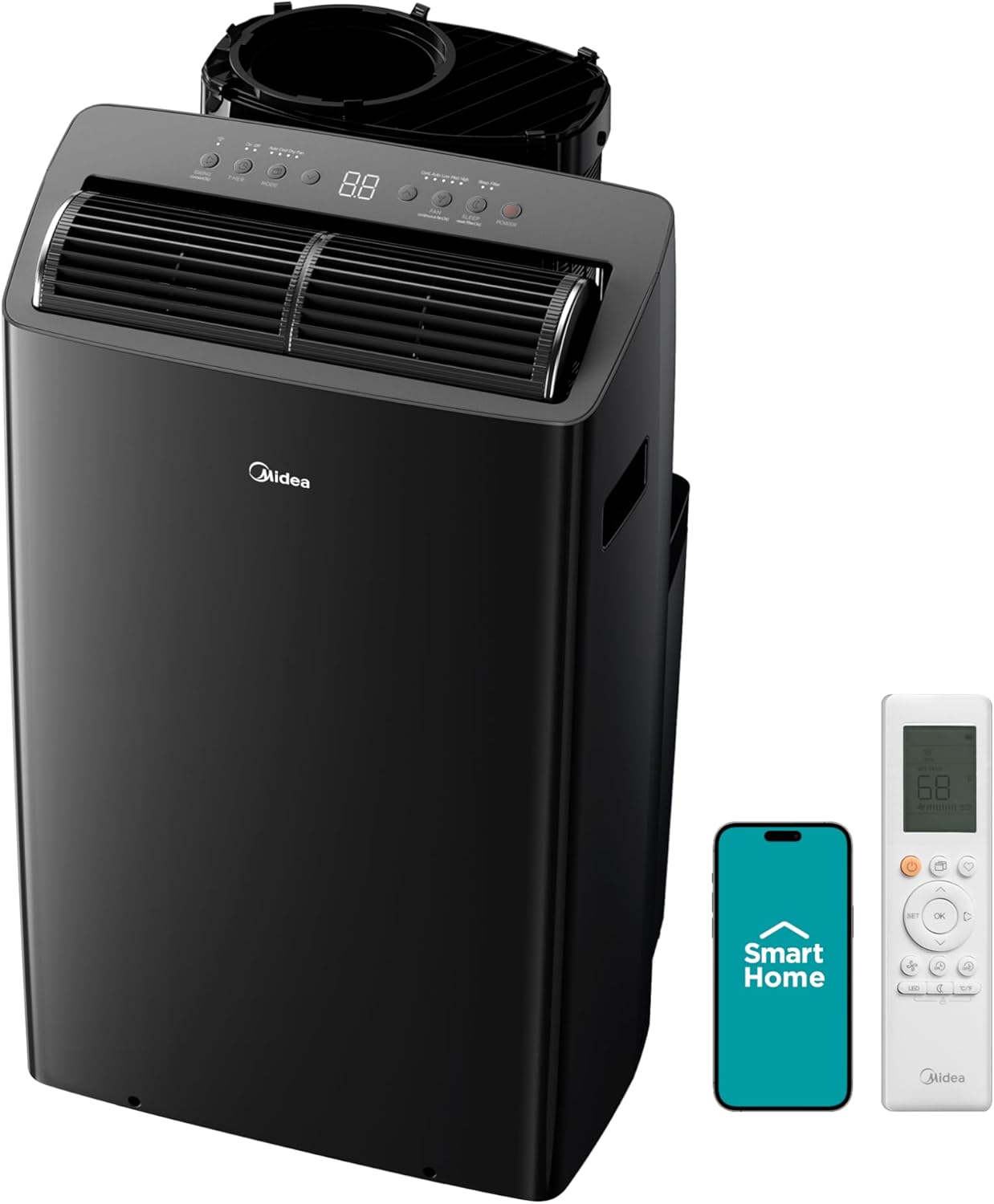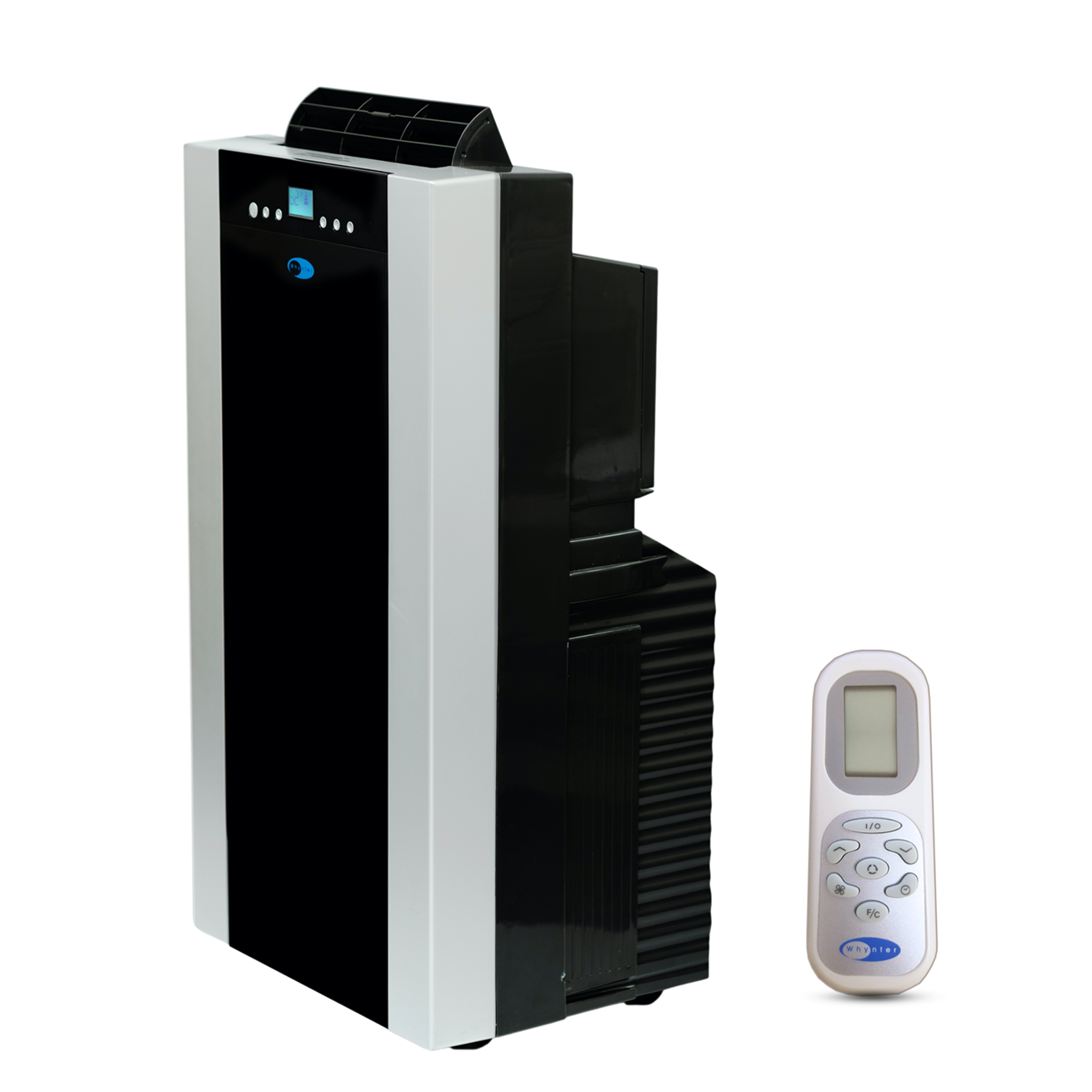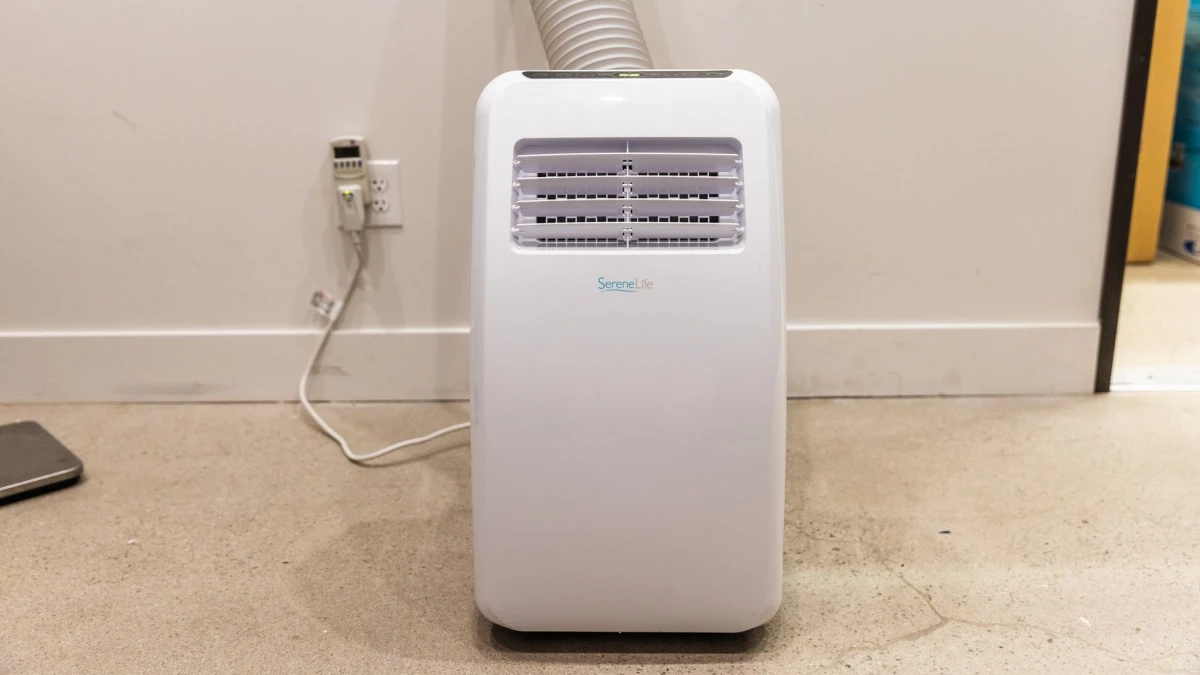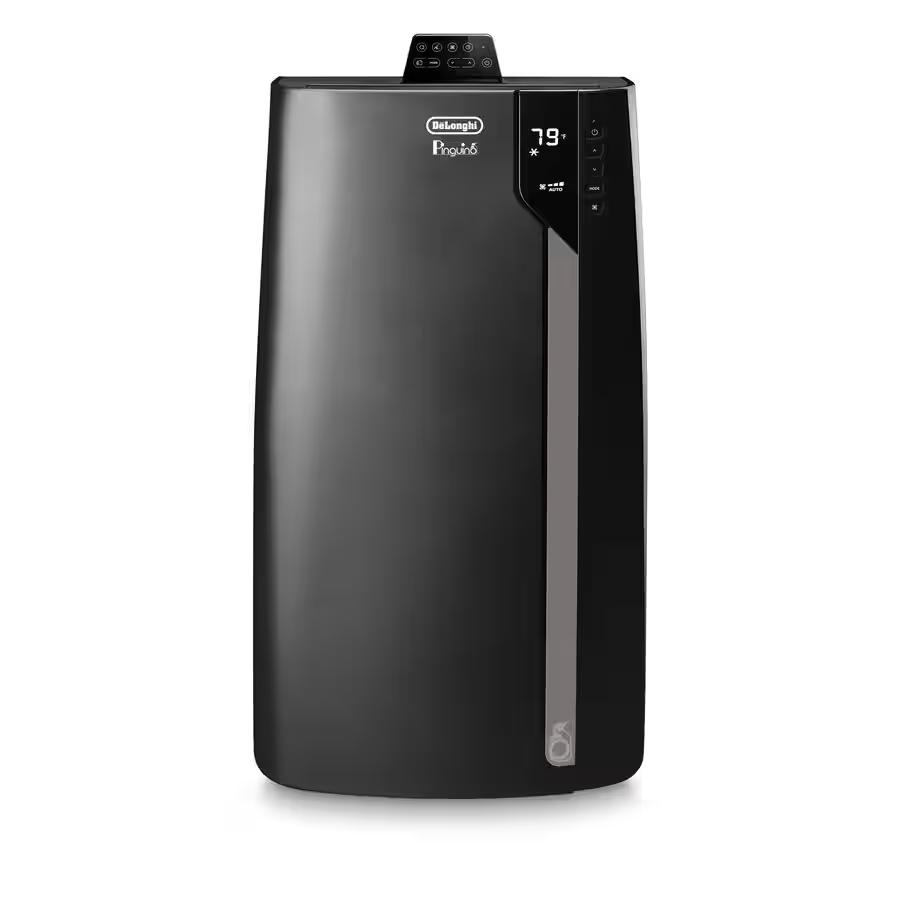Best Portable Air Conditioners 2025 | Top 5 Picks & Buying Guide
As indoor comfort becomes a year-round priority—whether you need to cool a single room in summer, reduce humidity in winter, or supplement a central system—portable air conditioners offer a flexible, installation-free solution. They’re ideal for apartments, rental properties, or anyone who needs temporary or zoned cooling without the hassle of a permanent unit. But what is the best portable air conditioner?
In this guide, we’ll walk you through the best portable air conditioners for 2025, with detailed recommendations and a helpful buying guide to make choosing the right one simple. Read on!
5 Best Portable Air Conditioners in 2025
Tired of sweating through summer? The right cooling solution is easier to find now, thanks to new types of portable air conditioners built for any room or setup. Check out these top picks.
1. EcoFlow WAVE 3 Portable Air Conditioner
The EcoFlow WAVE 3 Portable Air Conditioner sets a new standard in portable cooling with both heating and cooling functions. With 6,100 BTU cooling and 6,800 BTU heating capacity, it’s versatile enough for bedrooms, compact apartments, or outdoor setups like camping, RVs, and boating. An optional 1024Wh battery adds up to 8 hours of cordless use, making it a standout choice for off-grid comfort.
Key Features
Dual Cooling & Heating: Quickly changes temperature by 8–9°C in a 10m³ space.
Cordless Portability: Up to 8 hours of battery-powered use; charges via solar, AC, or car.
Smart Controls: App integration with Wi-Fi/Bluetooth plus Alexa/Google Assistant.
Quiet Operation: 44 dB sleep mode for undisturbed rest.
Eco-Friendly: Uses R290 refrigerant with intelligent modes like dehumidification and pet care.
Comparative Advantages
Few portable air conditioners combine cordless operation and solar compatibility like the EcoFlow WAVE 3. Its quiet design, smart features, and adaptability make it one of the best portable air conditioners outdoor activities and off-grid living, praised for both convenience and reliability.
EcoFlow WAVE 3 Portable Air Conditioner
2. Midea Duo
The Midea Duo delivers fast and efficient cooling for medium to large rooms up to 550 sq. ft. With 14,000 BTU and an innovative hose-in-hose design, it cools faster and saves energy compared to single-hose models. Smart connectivity and low noise levels make it a strong option for everyday use.
Key Features
14,000 BTU cooling with CEER 10.8 efficiency rating.
Hose-in-hose design reduces leakage for faster cooling.
Wi-Fi app and voice assistant support.
Operates at just 42 dB for quiet comfort.
3-in-1: Cooling, dehumidifying (50 pints/day), and fan.
Comparative Advantages
Its high efficiency makes it popular in regions with higher energy costs, while the smart features appeal to modern households. User reviews highlight its speed and quiet operation as standout strengths.


3. Whynter ARC-14S
Designed for spaces up to 500 sq. ft., the Whynter ARC-14S balances power and practicality. Its dual-hose 14,000 BTU system cools faster than single-hose alternatives, while a self-evaporating system minimizes maintenance.
Key Features
Dual-hose cooling with 14,000 BTU capacity.
Self-evaporating condensate system.
Remote control, timer, and adjustable fan speeds.
56 dB noise level.
Portable 80 lbs design with wheels and venting kit.
Comparative Advantages
Durable and low-maintenance, this model suits humid conditions where condensate can be an issue. It’s a practical pick for families who want dependable performance when they choose portable air conditioner for home use.


4. SereneLife SLPAC8
A budget-friendly choice for small spaces, the SereneLife SLPAC8 is compact yet reliable. With 8,000 BTU cooling, it’s perfect for bedrooms or small apartments where portability matters most.
Key Features
Compact 8,000 BTU cooling capacity.
3-in-1: Cooling, dehumidifying (38 pints/day), and fan.
Lightweight at 53 lbs with caster wheels.
Simple remote control and setup.
55–57 dB noise level.
Comparative Advantages
Affordable, portable, and functional, it earns strong reviews for renters or cost-conscious buyers. While not as fast as dual-hose models, it remains one of the best portable air conditioner picks for smaller living spaces.


5. De’Longhi EX390LVYN
For larger rooms up to 700 sq. ft., the De’Longhi EX390LVYN combines power and precision. Its 14,000 BTU output and Cool Surround technology ensure even, energy-efficient cooling.
Key Features
High-capacity 14,000 BTU cooling.
Cool Surround external sensor boosts efficiency.
Quiet at 52 dB.
3-in-1: Cooling, dehumidifying (45 pints/day), and fan.
83 lbs with wheels for easy movement.
Comparative Advantages
This premium unit stands out for its smart temperature control and quiet performance, making it a favorite for open-plan homes or noise-sensitive spaces seeking a top-tier air conditioner portable.


Things to Consider Before Buying a Portable Air Conditioner
No matter whether you want to choose portable air conditioner for home or for outdoor activities, it’s important to select a model that truly fits your lifestyle and cooling needs. Here are some key points to guide your decision:
Room Size and BTU Rating: Match the cooling capacity (BTUs) to the space. For example, 5,000–8,000 BTUs works for 100–200 sq ft, 10,000–12,000 BTUs for 250–400 sq ft, and 14,000+ BTUs for larger spaces up to 700 sq ft. Choosing the right size prevents wasted energy or weak performance.
Noise Level: Portable AC units typically operate between 44–60 dB. For quieter environments like bedrooms or tents, aim for under 50 dB, and always check the noise ratings for different modes.
Energy Efficiency: Look for high CEER ratings or Energy Star certification. In places with higher electricity costs, features like eco modes or solar panel compatibility can make a big difference in saving money.
Portability and Setup: Weight can vary from 53–83 lbs. Lightweight units are easier to carry outdoors, while heavier ones may need help. Window kits usually take 15–20 minutes to install—just ensure your windows are compatible.
Extra Features: Some models offer multiple functions such as cooling, dehumidifying, and fan modes. Smart controls add convenience, and if you pair your unit with a portable refrigerator, you’ll be fully equipped for camping or road trips.
Maintenance: Keep filters clean every 2–4 weeks. Units with self-evaporation reduce the hassle of draining, and proper storage in a cool, dry space during winter extends lifespan to 5–10 years.
Budget: Prices typically range from AU$400 to AU$800+. Energy-efficient models may cost more upfront but will save you money in the long run.
Conclusion
A portable air conditioner is a convenient way to control indoor climate year-round, offering flexibility, mobility and efficient cooling for a variety of rooms. Choosing the right model depends on your room size, noise preference, and energy needs, but with so many options available in 2025, finding the perfect fit has never been easier.
*The brands referenced in this article are provided for informational purposes only and do not indicate any partnership with EcoFlow.
FAQs
Do all portable air conditioners need to be vented out a window?
Most portable air conditioners do require venting through a window or another opening, since the unit must expel hot air from the room to cool effectively. Typically, this is done with a hose and a window kit, which usually takes only 15–20 minutes to install.
Without venting, the unit would simply circulate warm air, reducing its cooling efficiency. Some models can also be adapted for sliding doors or even wall vents, giving users more flexibility depending on their living setup.
What is the downside to a portable air conditioner?
While portable air conditioners offer great convenience, they do have some drawbacks. Most units create noticeable noise, typically between 44–60 dB, which may be disruptive in very quiet settings. They also take up floor space, which can be a concern in smaller rooms.
Additionally, venting is necessary for proper operation, requiring access to a window or similar outlet. Portability varies too, as heavier units may be difficult to move around. Finally, single-hose models tend to be less efficient than dual-hose designs, cooling slower in larger areas.
What is the 3 minute rule for air conditioners?
The "3-minute rule" for air conditioners advises waiting at least three minutes before restarting the unit after turning it off. This pause allows internal refrigerant pressures to equalize, protecting the compressor from high-pressure starts that can cause overheating or premature wear. Following this rule also prevents frequent cycling, which can reduce efficiency and increase energy use. Many modern air conditioners have built-in delay timers, but waiting three minutes manually helps ensure safe operation and prolongs the system’s lifespan.